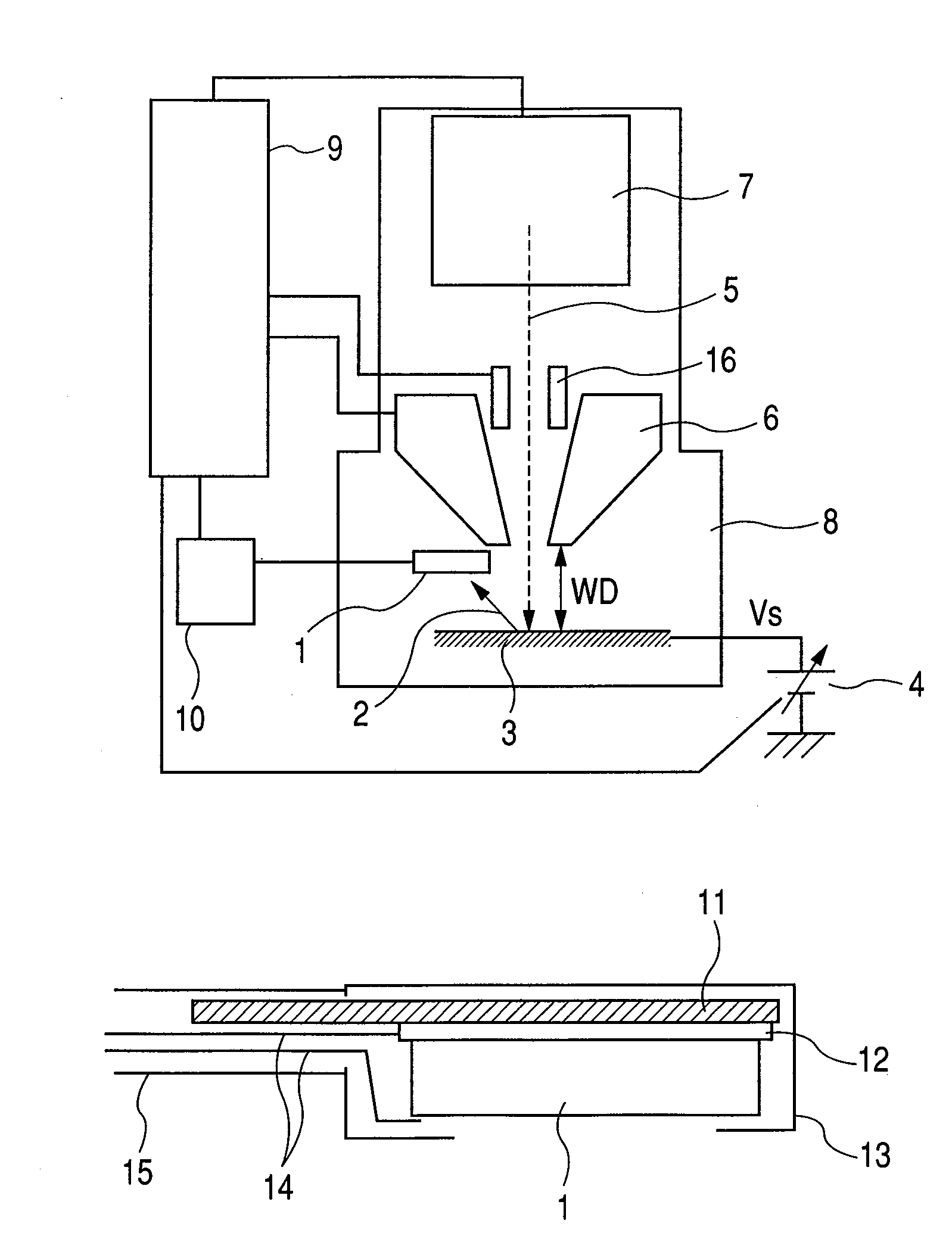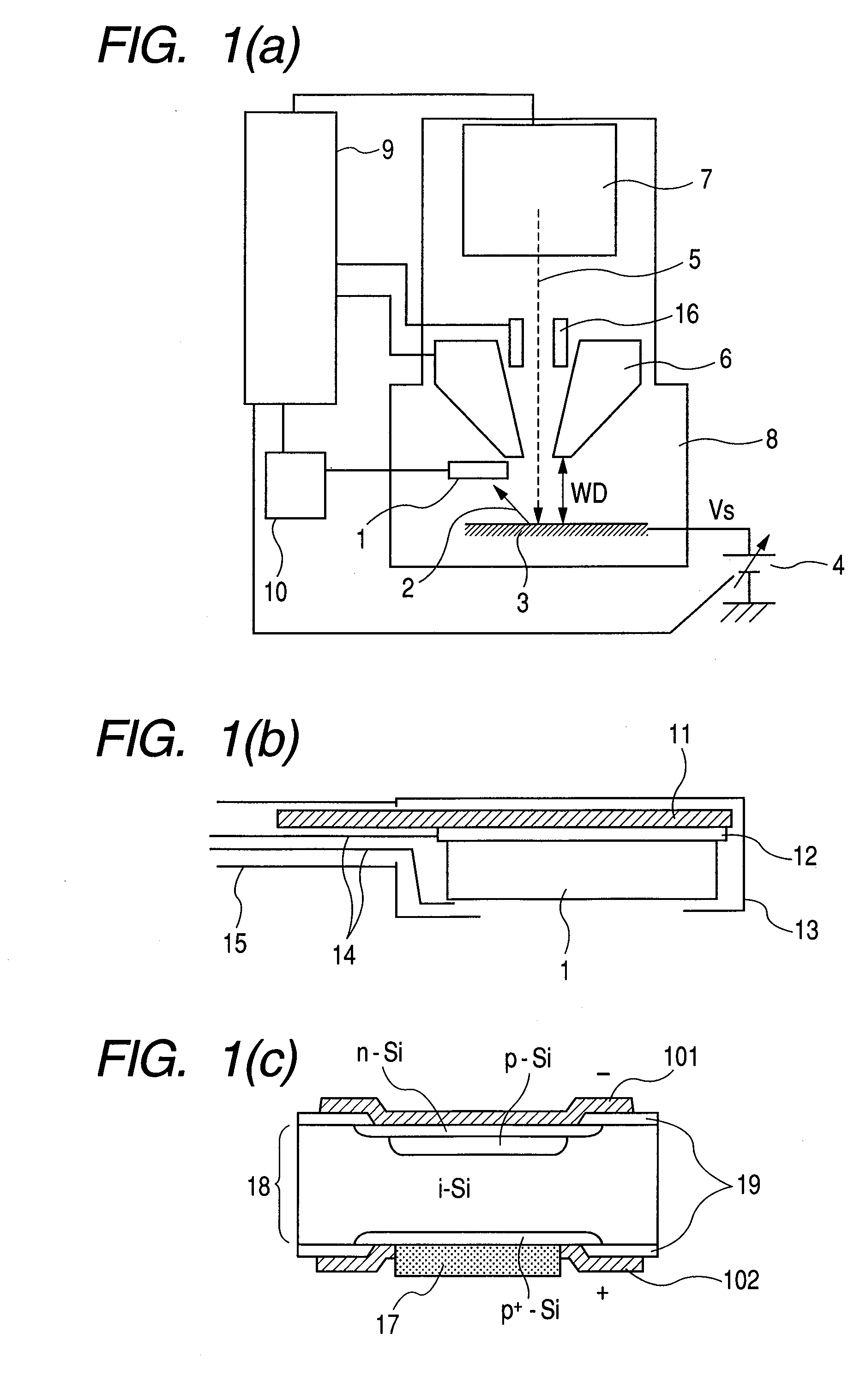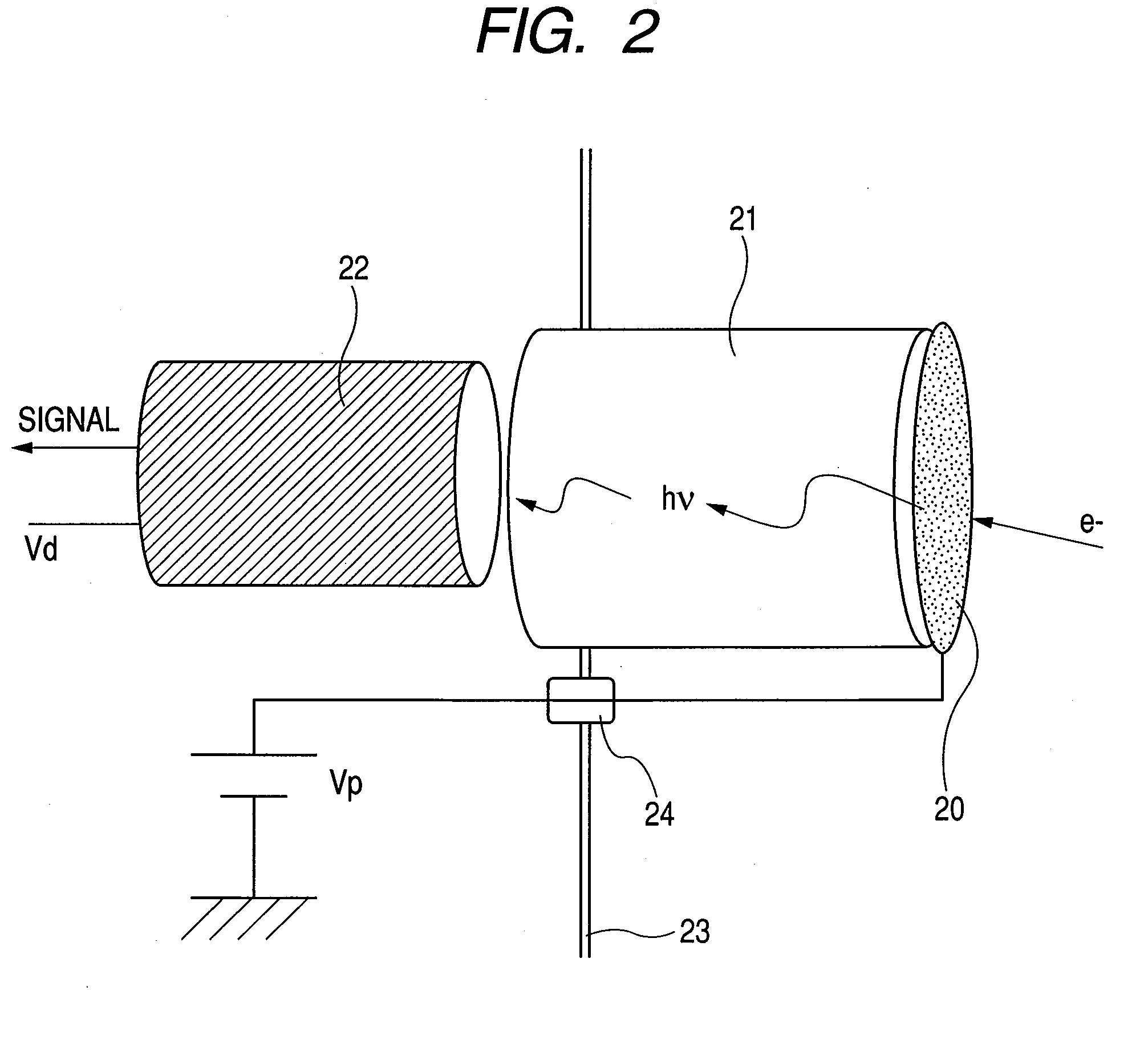Charged particle application apparatus
a technology of application apparatus and charged particles, which is applied in the direction of material analysis using wave/particle radiation, instruments, nuclear engineering, etc., can solve the problems that the detection function of the detector cannot be exercised simultaneously with the measurement function of the probe light, and cannot be installed under an objective lens or in a limited spa
- Summary
- Abstract
- Description
- Claims
- Application Information
AI Technical Summary
Benefits of technology
Problems solved by technology
Method used
Image
Examples
first embodiment
[0038]FIGS. 1(a) to 1(c) show a charged particle beam application apparatus according to a first embodiment of the present invention.
[0039]The present invention can be applied not only to a scanning electron microscope (SEM) but also to a charged particle beam application apparatus including, for instance, a microscope based on an ion beam.
[0040]The description of the present embodiment relates to an electron detector (electron detection section) that is thin and highly sensitive to low energy electrons, and to a case where the electron detector is applied to a scanning electron microscope as an example of the charged particle beam application apparatus.
[0041]In a scanning electron microscope, a probe electron beam 5, which is generated from an electron beam irradiation source 7 containing an electron source, is scanned in x-y direction by a deflector 16. Electrons 2, which are secondarily generated from a sample 3, are detected by an electron detector 1, and converted and adjusted ...
second embodiment
[0060]FIGS. 6(a) to 6(e) show the electron detector according to a second embodiment of the present invention, which is configured by using a substrate having a large energy gap.
[0061]The second embodiment will be described on the assumption that a diamond substrate is used as the substrate having a large energy gap. In the present embodiment, comb-like electrodes 101, 102 are mounted on a surface of the diamond substrate and positioned face to face. When electrons are injected while a potential difference of 10 to 100 V is applied across the electrodes, the incident electrodes generate electron-hole pairs. The electrons travel toward the positive (+) electrode, whereas the holes travel toward the negative (−) electrode.
[0062]Since the hole ionization rate is high within diamond, avalanche multiplication is solely determined by the holes traveling in a high electric field. FIG. 8 is a schematic structural cross-sectional view of avalanche multiplication. When an electron beam is to ...
third embodiment
[0071]FIG. 9 is a conceptual diagram illustrating a typical electron beam apparatus that makes use of compactness and high sensitivity of the detector according to the present invention. FIG. 9 shows a scanning electron microscope (SEM) as an example of the electron beam apparatus. Probe electrons 5 generated from the electron beam irradiation source 7 are adjusted so that three electron lenses (L1, L2, and L3 in FIG. 9) form a very small focus spot on the surface of the sample 3. The deflector then sweeps the focus spot in x and y directions. Electrons generated from the sample are converted to an electrical signal by the detector so as to observe a microscopic region of the sample surface. Although the deflector is not shown in the figure, it is positioned between lenses L1 and L2. A substrate bias voltage source 4 applies a voltage Vs to the sample 3. The employed structure is configured to decelerate the probe electrons 5 immediately before the sample 3 so that high-resolution o...
PUM
| Property | Measurement | Unit |
|---|---|---|
| energy | aaaaa | aaaaa |
| acceleration voltage | aaaaa | aaaaa |
| thickness | aaaaa | aaaaa |
Abstract
Description
Claims
Application Information
 Login to View More
Login to View More - R&D
- Intellectual Property
- Life Sciences
- Materials
- Tech Scout
- Unparalleled Data Quality
- Higher Quality Content
- 60% Fewer Hallucinations
Browse by: Latest US Patents, China's latest patents, Technical Efficacy Thesaurus, Application Domain, Technology Topic, Popular Technical Reports.
© 2025 PatSnap. All rights reserved.Legal|Privacy policy|Modern Slavery Act Transparency Statement|Sitemap|About US| Contact US: help@patsnap.com



